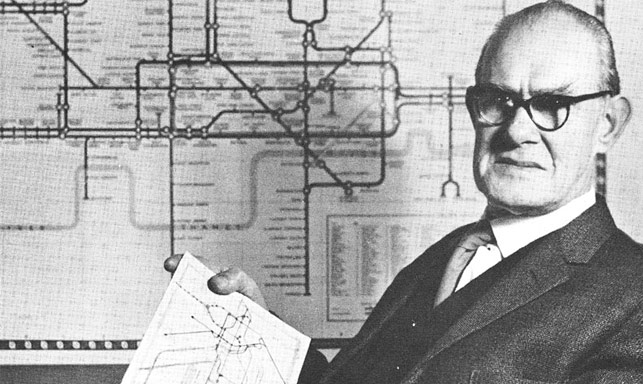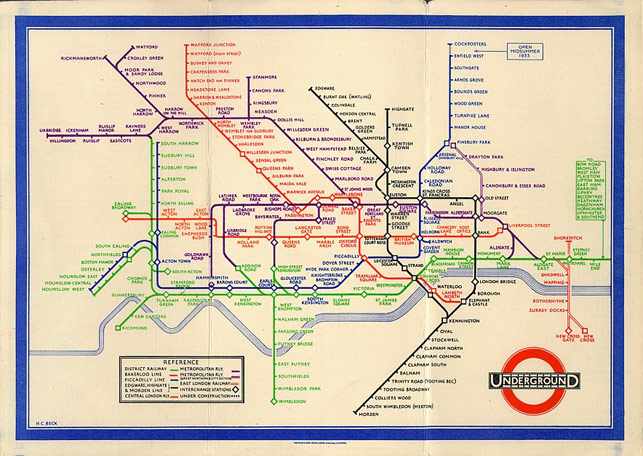I suppose when making the choice as to whether a designer of international note is either a force for development and motivation – a guru, or a force for destruction and revolution – a guerrilla, the choice is probably very much based on your relative point of view and the timing of that viewpoint. After all, most guerrillas became gurus in their own way didn’t they? Warhol was viewed as disturbed by many of the critics of the day but now is viewed as an artistic buddha, who’s style and imagery definitely will have influenced the output of countless graphic designers across the world. Or is it that to become a guru you must first embrace revolution, discounting the ideas of the day and forging a unique path yourself?
It would probably be a very interesting exercise to ‘mind map’ influencers for many modern day iconic designers to see how many of them are truly unique visionaries and how many simply drew from exposure and influence before creating their masterworks. For example, how did Milton Glaser, in 1977, come up with his world famous ‘ I Love New York’ logo? Where did Stefan Sagmeister’s idea for the Lou Reed album cover for Set the Twilight Reeling spring to mind?
I guess, as human beings, in the main,whether we notice it or not, we are all products of our experiences and exposure and, together with training and on the job experience, simply develop a style of our own. But for certain trendsetters and style changers, this perhaps is not enough to placate the creative spark and they set themselves outside the norm deliberately in order to make a statement.
Obviously, industry recognised trailblazers such as Glaser, Sagmeister, Paula Scher, Rob Janoff and Ruth Kedar come to mind, but for graphic design game changers, who else stands out head and shoulders above and beyond the creative kaleidoscope? And perhaps, as I ponder this theme, who was the most perhaps the most unlikely maverick that I can point to today?
Recognised across the world and indeed used by millions of people every day of the year is one design, (and indeed an approach to design principles), that did come from a most unlikely individual – Henry Charles Beck.
Better known as Harry Beck, he was born in London in 1902 and became an engineering draftsman at the London Underground signals office. Working in his spare time he created, in 1931, the initial design for the now globally recognised London Tube map. Seen as one of the country’s design icons and instantly recognised as representing London and the UK, Harry’s design and it’s principles were probably the earliest example of User Experience Design (with a few tweaks, aka User Interface Design ) and indeed have been used as the basis for transit system map designs across the globe to this day.
Whilst I accept that Harry’s design was modified over the years by other London Underground folk, he was a true guerrilla at the time, flying in the face of conventional design wisdom and with absolute scepticism from his employers at the time, but being instantly adopted by the travelling public – a real example of people power – who to this day still rely on this piece of work not just in the capital but all over the world, (for which Harry was allegedly paid just 15 guineas – £15.50 in new money!!!)
Who stands out in your minds eye as either a guerrilla or a guru – I’d be really interested to find out!
Congratulations to BWFC, promoted in season 16-17
Are You Ready to Blaze an eCommerce Trail with Magento 2.0?
A brief history and meaning of Lorem Ipsum
Iconic design part two – famous designers, history in your hands!
Iconic Design Part One – Don’t let the apple fall too far from the tree!
How to create great content – what everyone should know
Brandstanding – How to get your brand talking to it’s target audience
-
Congratulations to BWFC, promoted in season 16-17
Bolton Wanderers will play Sky Bet Championship football next season after easing to a convincing 3-0 victory over Peterborough United on Sunday lunchtime and securing second place in the process. Our infographic gives a brief overview of the stats for season 2016-2018. Congratulations to all the staff, team and fans at BWFC Twitter LinkedIn Google+ Read More
-
Are You Ready to Blaze an eCommerce Trail with Magento 2.0?
With over a quarter of a million online shops on the Magento platform it is fair to say that the market has grabbed the functionality and flexibility of Magento 1.x with a great deal of enthusiasm and in many cases worked around any functional constraints ‘without concern’ (albeit with some fancy API and developer budgetary Read More
-
A brief history and meaning of Lorem Ipsum
I wonder how many of you, with time on your hands, ever tried to cast you minds back to the good old days of school and tried your hardest to translate the most common text in the history of web and graphic design. You may have struggled with the conjugation of the verbs, the nature Read More






